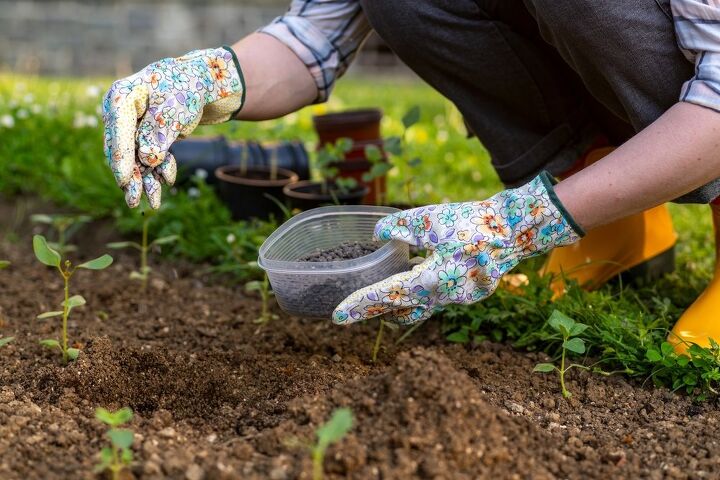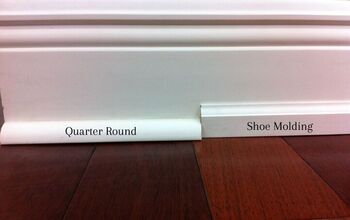How Much Does It Cost To Start A Garden?

It can be intimidating to start a garden because it takes a lot of work. However, it can be quite rewarding once you get past the initial investment and workload. So, how much does it cost to start a garden?
It costs $500-$700 or more to start a garden, but it can cost as little as $100 if you keep it simple. Landscaping is the biggest cost at $10-$12 per square foot, but that’s not necessary for all gardens. You can start a simple garden and spend $90 on plants and $5 per square foot on soil.
There’s no reason to go big when you start a garden. First, focus on a handful of plants and build your vision around them. Follow along as we explore how much it costs to start a garden and highlight some key tips.
How Much Does It Cost To Make A Garden?
The cost to start a garden ultimately depends on its size and which plants you choose. Factors such as extensive landscaping can add thousands to the cost, but that may not be necessary. Several important factors affect the cost of making a garden, such as:
Initial Investment
The initial investment to start a garden can cost $500-$700. However, you can save hundreds if you already have raised beds and tools at home. You can expect to spend at least $5 per square foot for soil, but it depends on the brand.
The depth of each bed also affects how much you will spend on the soil. You may need to add a cage to keep predators out if you plant tomatoes and herbs. Cages are typically only $5 each, so that doesn’t add much to the cost.
You will likely need to spend $30 to $60 on tools, such as hoes and trowels if you don’t have them. The rest of the cost will come from plants and seeds, which can total $90 depending on how many you buy. Rare, tropical plants can add hundreds of dollars to the cost, but that’s not always necessary for beginners.
Mulch
Do you plan to mulch your yard? If so, you most likely need to hire a company to do it if you don’t have experience. Contractors typically charge up to $30-$40 per yard (3 feet) and $30-$40 per hour on labor.
Otherwise, you can save hundreds if you buy the mulch and apply it without help. Mulch typically costs $14 per cubic yard. How much you spend depends on the size of your garden.
For example, you would need up to 50-56 cubic yards of mulch to cover a garden that is 24 square feet with a 28” depth. That can cost up to $700 depending on where you buy the mulch. In that case, it may be worth the cost to hire a professional if you don’t want to regularly buy mulch in bulk.
Trees
It costs an average of $300 to plant a tree, but it can cost just $120-$150. The cost depends on the tree, its size, and where you buy it from. That said, it costs nothing to transplant a tree from another location on your property, but it can be hard and harm the tree.
Landscaping
It’s worth it to hire a professional to landscape your yard and garden. Otherwise, you would need to rent or buy a bunch of tools that you may not use again. Landscapers typically charge $10-$12 per square foot, but you may pay just $5 per square foot.
However, it can cost up to $15 per square foot to landscape a yard with a grading problem. Labor accounts for at least 65% of the cost, if not more. You can do some landscaping work yourself, such as mulching, to lower the cost.
Pest Control
Pest control is an essential part of starting a successful garden. Everything from spider mites and aphids to rabbits and moles can wreak havoc on a garden. It costs as little as $60 per year to protect a garden from pests if you only need to use an insecticide.
However, you could spend up to $1,200 per year to remove moles if you have a major problem. Otherwise, you can buy and set mole traps to save hundreds or even thousands. Mole traps cost $15-$25 per trap in most cases.
The only downside is that you will have to monitor and manage them without help. Even still, that’s a great idea if you don’t want to invest in a pest removal service.
Tips To Start A Garden
Create A Plan
Your garden will only thrive if you plan well. While spontaneity is great, you should start your garden with a specific plan. For example, it’s a great idea to decide which plants and parts of your yard you want to use.
From there, you can figure out a budget and how long it will take for them to grow. Pick out both annuals and perennials, so some of your plants will come back next year.
Timing Is Everything
Depending on your climate, some plants simply won’t thrive until a certain time of the year. It’s important to research plants to figure out which climate zone they thrive in. For example, tropical plants won’t grow in climates above zone 8 until summer.
That said, tropical plants will quickly die in the fall and winter in the Midwest or East Coast unless you bring them inside. Pick plants that thrive in your climate zone and plant them at the optimal time. For example, April is the best time to plant pansies in Iowa.
Position Your Plants Correctly
Sunlight is vital to a plant’s growth, and that has a lot to do with placement. Some plants, like lungwort, require shade for optimal growth. Conversely, shasta daises rely on full sunlight to reach their ideal growth potential.
Pay attention to your future garden before you plant anything. Carefully watch where the sun sits throughout the day. Put your full-sun plants in areas that get up to 8 hours of sunlight per day. This will make your job easier, and make your plants look better.
Focus On Soil Drainage
It’s easy to overlook soil drainage when you start a garden. However, that is a mistake, as good drainage is necessary for a plant to absorb water and nutrients. Look for soil that can drain up to 3” of water per hour, or as little as 2”.
Soil that only drains 1” of water per hour isn’t ideal for a good garden. The plant and roots will stay wet for too long, and that can hinder their growth.
Be Consistent
Create a watering schedule and stick to it if you want your garden to succeed. Many of your plants may have a different watering schedule depending on the type. Plants like begonias and African violets require lots of water.
However, you may only need to water plants like orchids and pothos 1-2 times per week in some cases. That’s why it’s important to research each plant and see how much water it needs.
Summing It Up
It costs up to $500-$700 to start a garden depending on what work is required. You could only spend $100-$200 if you buy soil, cheap plants, seeds, and basic tools. The biggest cost is mulching and landscaping your garden, which can cost $12 per square foot.
Related Guides:

Nick Durante is a professional writer with a primary focus on home improvement. When he is not writing about home improvement or taking on projects around the house, he likes to read and create art. He is always looking towards the newest trends in home improvement.
More by Nick Durante



















![10 Most Dangerous Neighborhoods in Baltimore [Updated]](https://cdn-fastly.upgradedhome.com/media/2023/07/31/9075655/10-most-dangerous-neighborhoods-in-baltimore-updated.jpg?size=350x220)







